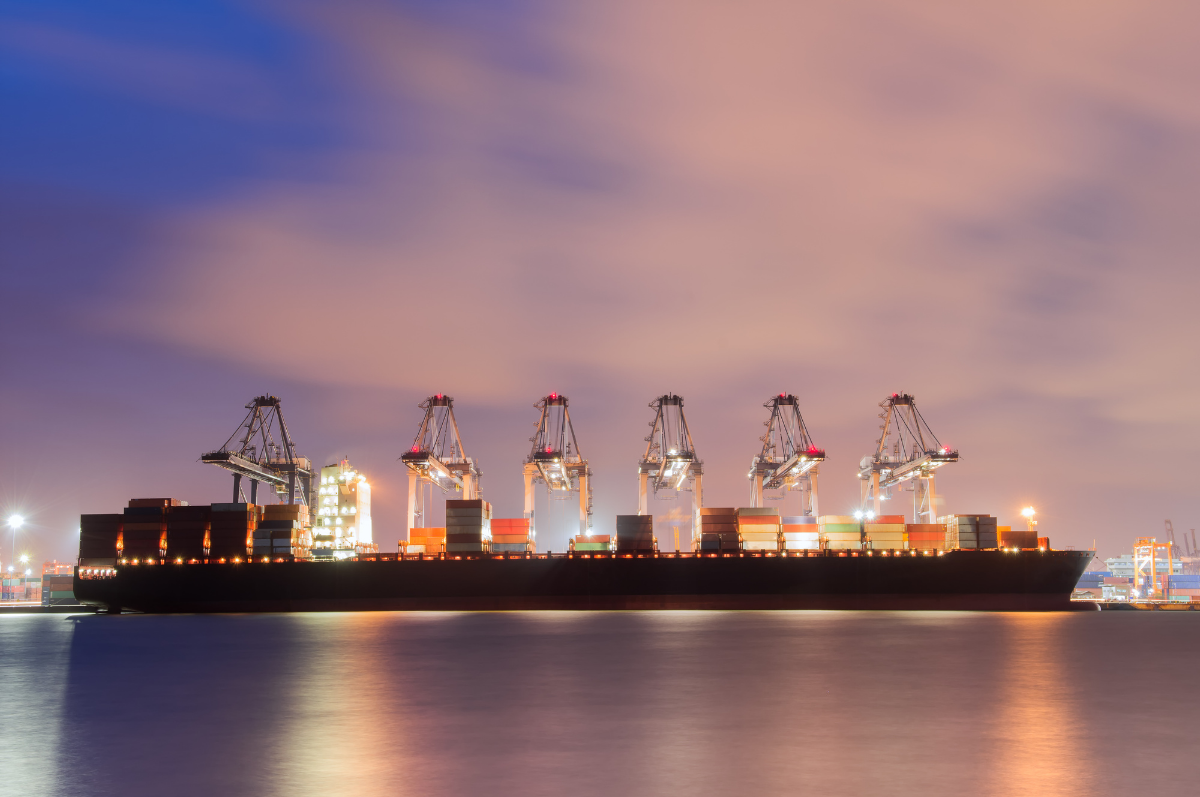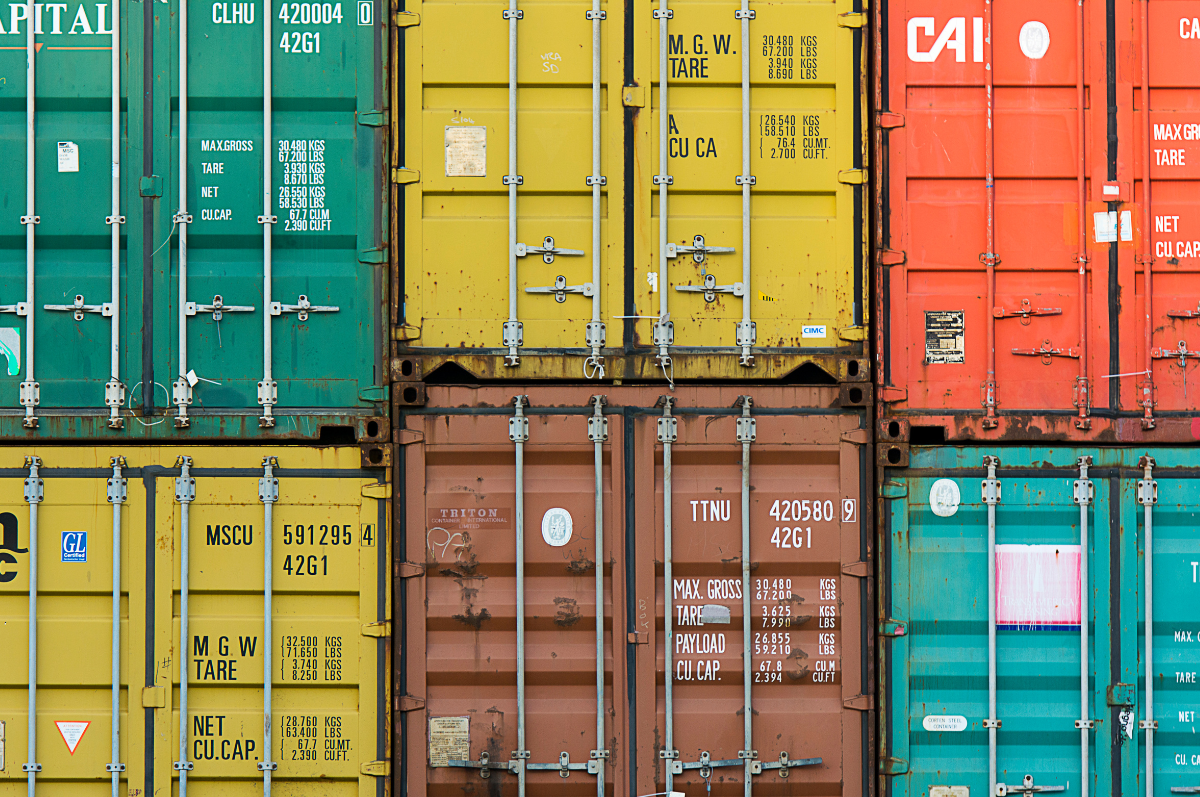While US – China trade tensions have reverberated across global supply chains, ocean freight rates across key routes are being reshaped by evolving carrier strategies and shifting sourcing patterns.
The imposition of a sweeping 145% tariff on all goods from China has triggered widespread order cancellations and shipment pauses among U.S. importers, according to Judah Levine, head of research at shipping analyst Freightos. Many importers are holding out for a potential de-escalation through bilateral negotiations, which are yet to formally commence.
Levine reports that the impact on China – US ocean freight demand has been severe, with volume declines ranging between 30% and over 50% in recent weeks. Gene Seroka, executive director at the Port of Los Angeles, the busiest U.S. container terminal, told CNBC that volumes are forecast to fall 35% next week. To counteract this sharp drop, carriers are taking decisive measures to balance supply and demand, cancelling significant numbers of sailings and temporarily suspending entire service loops.
Estimates suggest that 28% of trans-Pacific capacity to the West Coast and 42% to the East Coast will be removed in the coming weeks. Many U.S. importers, buffered by inventory stockpiled ahead of tariff hikes, may withstand a brief interruption. However, should tariffs persist, U.S. consumers could face shortages of goods heavily sourced from China, such as toys, baby products and sporting equipment, along with the inevitable price rises as importers absorb steeper duties.
Crucially, the reduction in capacity out of China is smaller than the fall in freight demand. This is partly attributable to increased volumes from other Far East nations, as ports in these countries are often part of wider China – North America container service routes. Some shippers are accelerating exports from Southeast Asia ahead of the expiration of a 90 day pause on reciprocal U.S. tariffs for these countries in July.
Forwarders report that trans-Pacific demand from Southeast Asia has risen, with estimates suggesting bookings are up 20% in recent weeks. Carriers may reallocate blanked China–US capacity to these growing lanes to meet demand, though a rapid shift in volumes raises the risk of congestion, delays and potential equipment shortages.
Despite the upheaval, trans-Pacific container rates have demonstrated resilience. The wave of blank sailings is expected to stabilise prices out of China, even as volumes contract. According to Freightos Terminal data, rates from China and Southeast Asian nations have diverged on key lanes. For instance, prices to Long Beach, California, from both Shanghai and Vietnam’s Saigon port surged over 40% between early April, when tariffs were announced, and mid-April, when they took effect. Since then, Shanghai–Long Beach rates have dropped over 30%, while Saigon prices have remained elevated.
A Wider Global Picture Emerges
Beyond the trans-Pacific corridor, ocean freight dynamics are also shifting on a global scale. European importers, wary of both tariff risks and geopolitical instability, are diversifying sourcing strategies, increasingly turning to Southeast Asia, India and parts of Latin America to mitigate exposure to Chinese supply chain volatility.
Meanwhile, the Red Sea crisis, with continued disruptions to Suez Canal traffic due to regional conflicts, has forced many carriers to divert vessels around the Cape of Good Hope. This has led to increased transit times and a tightening of available vessel capacity globally, contributing to higher freight rates on Asia–Europe routes. Drewry’s World Container Index indicates Asia–Europe spot rates rose by nearly 18% between February and April 2025 as a direct result of these reroutings.
Compounding the situation, global container imbalances persist. Congestion at South Asian ports, particularly in India and Bangladesh, has slowed the repositioning of empty containers needed to meet export demand in emerging markets. As a result, shippers may face both higher costs and longer lead times on a wider array of trade lanes, not just those involving China.
For UK importers and exporters, this complex environment underscores the importance of agile supply chain planning. Diversifying supplier bases, building inventory buffers and closely monitoring carrier capacity developments will be key strategies for navigating uncertainty in the months ahead.
The global ocean freight landscape is evolving rapidly, shaped by shifting trade policies, regional conflicts, and changing sourcing patterns. While uncertainty remains, businesses that stay informed and flexible will be best positioned to minimise disruption and maintain supply chain resilience.
At Hawley Logistics, we combine real-time market insight with tailored freight solutions to help businesses navigate volatility with confidence. Whether adjusting routes, sourcing alternatives or managing customs complexities, our team is on hand to keep your cargo moving smoothly.




